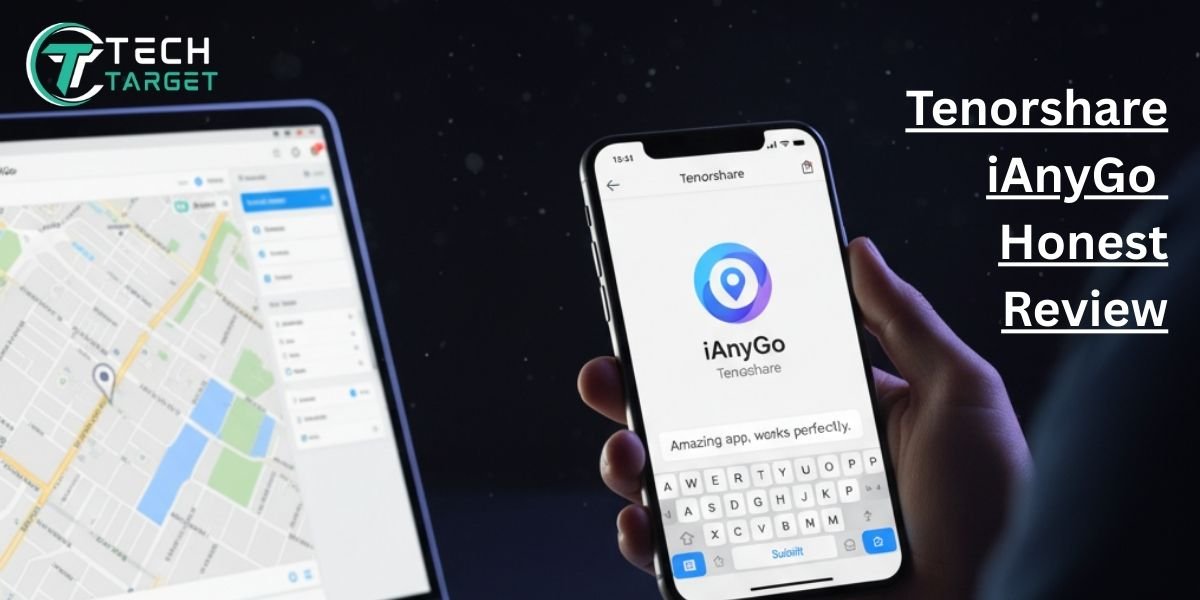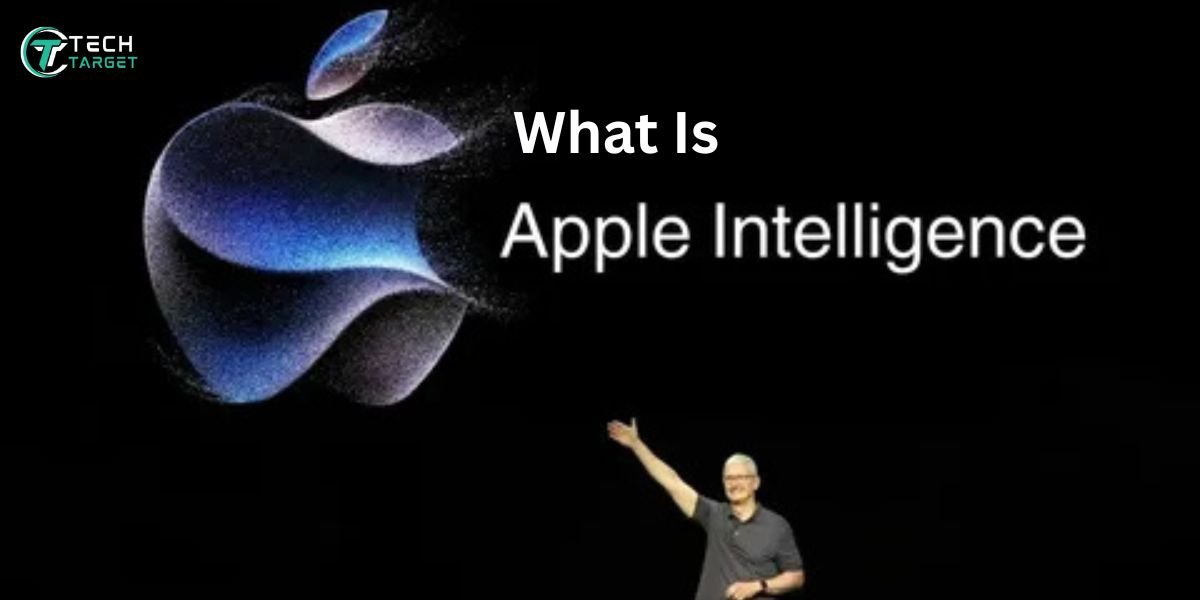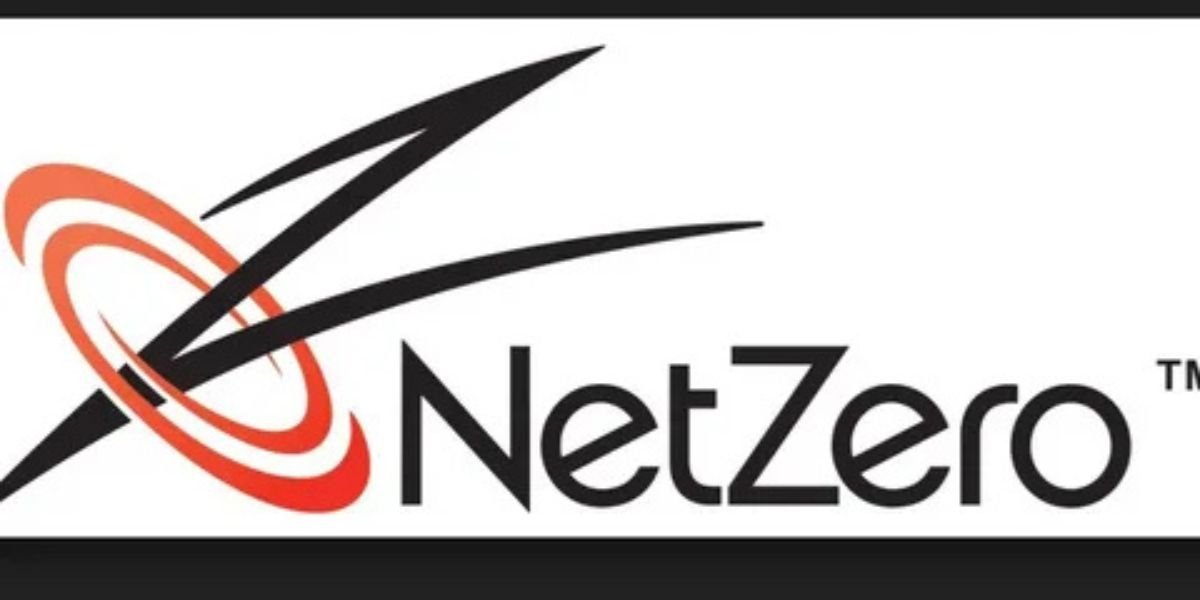What is Microsoft Power Automate? Your Complete Guide
In today’s whirlwind of digital operations, every business is on the hunt for that magic formula: more time, lower costs, and a significant boost in efficiency. Enter Microsoft Power Automate, your potential game-changer. Think of it as a smart, cloud-based assistant designed to automate those repetitive tasks that bog you down across various applications and services – all without needing a computer science degree.
Originally making its debut in 2016 as Microsoft Flow (you might still hear some folks use this older name!), it later evolved into the more powerful Power Automate, becoming a cornerstone of the Microsoft Power Platform ecosystem, sitting alongside its siblings Power BI for insightful data analysis and Power Apps for custom-built applications.
At its heart, Power Automate takes the complexity out of business processes by letting you create “flows” – essentially, step-by-step blueprints that execute tasks automatically. Whether it’s something as simple as getting notifications or as intricate as managing approvals and connecting different apps, Power Automate puts you in control to streamline your daily grind and dedicate your energy to what truly matters.
Who is Microsoft Power Automate For? It’s More Inclusive Than You Think!
Forget the notion that automation is just for tech gurus. Power Automate is built with everyone in mind:
- Business users: If you’re not a techie but find yourself doing the same things over and over (like sending email reminders, manually entering data, or chasing approvals), Power Automate’s intuitive drag-and-drop interface is your new best friend. You can build simple flows to handle these tasks without writing a single line of code.
- IT departments: For the developers and system administrators out there, Power Automate offers the power to build sophisticated automations, connect intricate systems, and maintain secure workflows across the entire organization. It’s a robust tool for managing complex IT processes.
- Enterprise organizations: Need to automate at scale? Power Automate’s robotic process automation (RPA) capabilities and AI tools can tackle integration with older systems and handle large-scale automation projects, making it a vital asset for big companies.
- Small businesses: Even if you’re a small team, time is precious. Power Automate can help you reclaim those lost hours by automating daily administrative tasks, allowing you to focus on growth and customer engagement.
- Power users and citizen developers: Are you the go-to person in your office for finding clever tech solutions, even without formal training? Power Automate empowers you to build powerful solutions and automate workflows without needing to be a professional developer.
Essentially, Power Automate democratizes automation, handing the power to anyone ready to explore its potential, whether you’re leading a small startup or managing a multinational corporation.
How Does Microsoft Power Automate Work? The Nuts and Bolts
At its core, Power Automate operates on a straightforward principle: triggers and actions.
Here’s the breakdown:
- A trigger is the event that kicks off a flow. This could be anything from receiving a new email in Outlook, a [file being updated in SharePoint, or someone submitting a form in Microsoft Forms.
- Actions are the subsequent steps that the flow performs once triggered. These could include sending a notification in Microsoft Teams, creating a record in a database like Dataverse, or posting a message in a communication channel.
Building these workflows is a visual affair, thanks to Power Automate’s user-friendly designer interface. You can start with pre-built templates for common scenarios, making it incredibly easy to get started. For more intricate tasks, you have the flexibility to add advanced conditions (like “if this, then that” logic), loops (repeating actions), and even integrate AI models for intelligent automation.
What makes Power Automate truly versatile is its extensive library of over 500 connectors. These act as bridges, allowing seamless integration with your favorite Microsoft 365 apps think Excel, Outlook, Teams, SharePoint, popular third-party platforms like Salesforce, Dropbox, and even your custom APIs for bespoke integrations.
Furthermore, Power Automate steps beyond cloud-based automation with its low-code robotic process automation (RPA) capabilities through desktop flows. This means you can automate tasks within older applications that don’t have modern APIs, essentially having a digital robot mimic your mouse clicks and keystrokes.
Microsoft Power Automate Services: A Toolkit for Every Automation Need
Power Automate isn’t just a one-trick pony. It offers a suite of services designed to cater to diverse business requirements:
- Cloud Automation: Automate tasks and processes that live in the cloud across the Microsoft ecosystem (Microsoft 365, Dynamics 365) and a vast array of other web-based applications.
- Desktop Automation (RPA): Automate those manual, repetitive tasks you perform on your local computer or virtual machines using a combination of screen recording and scripting.
- AI Builder: Infuse intelligence into your workflows with pre-built AI models for tasks like extracting data from forms, detecting objects in images, and predicting future outcomes – all without needing a data science background.
- Process Mining (Process Advisor): Gain valuable insights into your existing business processes. Analyze how work flows, identify bottlenecks, and pinpoint opportunities for automation and improvement.
- Integration Hub: Leverage the power of connectors to seamlessly link your internal and external systems, breaking down data silos and enabling smooth information flow.
- Approval Workflows: Streamline decision-making with multi-step, multi-approver workflows for managing document reviews, vacation requests, expense reports, and more.
Each of these services is designed to empower you to automate everything from simple personal productivity hacks to complex, enterprise-grade workflows, making Power Automate an incredibly adaptable tool for any organization.
Types of Flows: Choosing the Right Automation Path
Power Automate offers different types of flows, each tailored for specific automation scenarios:
- Cloud Flows: These are your go-to for automating tasks and processes in the cloud. They can be triggered automatically by events like a new tweet on Twitter, run manually at your command, or follow a pre-set schedule for recurring tasks.
- Desktop Flows: Also known as RPA flows, these are your digital assistants for automating repetitive actions on your desktop or within web applications. They’re perfect for tasks that involve interacting with software interfaces directly.
- Business Process Flows: Unlike the others that automate background tasks, these flows guide users through a defined series of steps within an application, especially Dynamics 365. They ensure consistency and standardization for complex processes like sales cycles or customer service protocols.
Understanding these different flow types helps you choose the right approach for your specific automation needs, whether you’re working primarily in the cloud, dealing with legacy systems, or aiming to standardize how your team works.
Key Features of Microsoft Power Automate: The Power Under the Hood
Power Automate is packed with features that make automation accessible, powerful, and scalable:
- Low-Code/No-Code Development: Build sophisticated workflows with an intuitive visual designer, minimizing or eliminating the need for extensive coding knowledge.
- Wide Range of Connectors: Seamlessly connect to a vast ecosystem of Microsoft services like OneDrive, Teams, Outlook, SharePoint, and popular external applications like Twitter, Dropbox, Google Drive, and Salesforce.
- AI Integration: Leverage AI Builder to embed intelligent capabilities like text recognition (OCR), form processing, and sentiment analysis directly into your workflows, making them smarter and more efficient.
- Process Mining Tools: Use Process Advisor to gain deep insights into your existing workflows, identify bottlenecks, and discover prime opportunities for automation.
- RPA Capabilities: Automate interactions with legacy applications and repetitive manual tasks on your desktop using desktop flows.
- Robust Security: Benefit from built-in compliance and governance controls that ensure the privacy and protection of your data and processes.
- Scalability: Whether you’re automating a simple personal task or orchestrating complex enterprise-wide processes, Power Automate can scale to meet your needs.
These features combine to make Power Automate a highly versatile and powerful automation platform in today’s digital landscape.
Cloud Flows: Automation in the Digital Realm
Cloud flows are the workhorses of Power Automate, enabling you to create automated workflows that operate entirely in the cloud. They can be triggered by specific events, run on a schedule, or be initiated manually.
There are three primary types of cloud flows:
- Automated Flows: These flows spring into action when a specific event occurs, such as a new email arriving in your inbox, a file being added to a shared library, or a record being created in a database.
- Instant Flows: You have the power to trigger these flows manually, often with a simple click of a button within a mobile app or another interface. They’re perfect for on-demand automation.
- Scheduled Flows: As the name suggests, these flows run at a specific time or at recurring intervals. They are invaluable for tasks like generating regular reports, synchronizing data between systems, or performing routine maintenance.
Cloud flows are ideally suited for scenarios where your data and processes primarily reside online, and they offer tight integration with the Microsoft 365 suite, Dynamics 365, and a multitude of other cloud-based services.
Desktop Flows: Your Digital Robot Assistant
Desktop flows are Power Automate’s foray into the world of Robotic Process Automation (RPA). They empower you to automate repetitive tasks on your local machine or within virtual environments by recording your actions (like mouse clicks and keystrokes) or by writing scripts for more complex sequences.
Desktop flows are particularly useful for:
- Automating manual processes within older, legacy systems that don’t have modern APIs.
- Interacting with websites or desktop applications where direct API integration isn’t available.
- Seamlessly copying and pasting data between different software applications that lack native integration capabilities.
Microsoft provides a dedicated application called Power Automate for Desktop, which offers both a user-friendly, no-code recording feature and more advanced scripting options for tackling more intricate automation scenarios. This opens up significant opportunities for organizations to automate even their most outdated, manual processes without the need for extensive and costly development resources.
Business Process Flows: Guiding Users Through Complex Tasks
Business Process Flows in Power Automate take a different approach to automation. Instead of automating background tasks, they focus on structuring how users interact with data and make decisions within an application, particularly within Dynamics 365. They ensure consistency and standardization across your organization’s key processes.
Key characteristics of Business Process Flows include:
- Stage-based guidance: Users are guided through a series of clearly defined stages, each with specific actions they need to complete or information they need to input.
- Standardization: They enforce consistent execution of processes like managing sales leads, onboarding new customers, or resolving support cases, ensuring everyone follows the same steps.
- Integration with Dynamics 365: These flows are deeply integrated with Dynamics 365, making them an invaluable tool for teams using CRM or ERP functionalities.
Business Process Flows are incredibly beneficial for organizations that need to ensure regulatory compliance, enforce standard operating procedures, or maintain detailed audit trails for their core business processes.
Use Cases and Examples: Power Automate in Action
Microsoft Power Automate is designed to seamlessly integrate into virtually any workflow, ranging from simple personal productivity hacks to sophisticated enterprise-level processes. Let’s dive into some more detailed real-world examples:
- Business Process Automation: Organizations are leveraging Power Automate to automate a wide array of routine business processes, such as streamlining invoice approvals, automating the employee onboarding process, or efficiently managing customer feedback collection. For instance, a sales manager can automate the approval of discount requests, leading to faster turnaround times and improved customer satisfaction.
- HR and Employee Management: Human Resources departments can automate critical tasks like new employee setup. Power Automate can trigger automated workflows that create necessary email accounts, initiate equipment requests, schedule essential training sessions, and introduce new hires to company policies – all without manual intervention.
- IT and System Management: IT teams are using Power Automate to proactively monitor systems and automatically respond to common alerts. For example, if a critical server experiences downtime, Power Automate can automatically generate a support ticket in the helpdesk system and instantly notify key IT personnel.
- Marketing and Customer Engagement: Marketing teams can automate crucial aspects of lead generation and nurturing. When a visitor fills out a contact form on a company website, Power Automate can automatically send a personalized follow-up email, update the lead information in the CRM system, and notify the sales team in real-time, creating a seamless flow.
- Financial Services and Approvals: Finance departments are automating tasks like expense tracking, budget approvals, and the generation of fraud detection alerts. For example, when a potentially suspicious financial transaction occurs, Power Automate can trigger a workflow that escalates the case for immediate manual review.
These diverse examples illustrate how Power Automate significantly reduces manual workload, accelerates operational speeds, and enhances accuracy across a multitude of industries and business functions.
Benefits of Using Microsoft Power Automate: Tangible Advantages
Investing in Microsoft Power Automate brings a wealth of tangible benefits to both individuals and organizations:
- Significant Time Savings: Manual tasks, such as sending repetitive emails, meticulously updating spreadsheets, and chasing down approvals, can consume countless hours each week. Automating these tasks frees up valuable time, allowing employees to concentrate on more strategic and impactful work.
- Enhanced Accuracy and Reduced Errors: Human error is inevitable, especially when dealing with repetitive tasks. Power Automate ensures consistent execution by applying the same rules every single time, dramatically minimizing the potential for mistakes in data handling and task completion.
- Better Workflow Visibility and Control: Managers gain enhanced visibility into automated processes through intuitive dashboards and comprehensive reports. This transparency enables them to identify bottlenecks, optimize workflows for greater efficiency, and make data-driven decisions with greater speed and confidence.
- Cost-Effective Scalability: Automations can seamlessly scale alongside your business growth without requiring a proportional increase in staffing or resources. Small businesses can leverage Power Automate to optimize their limited resources, while large enterprises can automate massive operations across multiple departments, all in a cost-effective manner.
- Empowerment of Non-Technical Users: Thanks to its user-friendly low-code/no-code approach, business users – often referred to as “citizen developers” – can create their automation solutions without needing to rely on IT teams. This fosters faster innovation and reduces dependency on potentially overloaded technical resources.
By effectively addressing both operational efficiency and the need for innovation, Power Automate plays a crucial role in driving successful digital transformation initiatives within organizations of all sizes.
Power Automate AI Builder: Adding Intelligence to Your Automation
AI Builder is Microsoft’s integrated artificial intelligence powerhouse within Power Automate. It empowers users to seamlessly incorporate intelligent capabilities into their workflows without requiring any coding expertise or deep knowledge of data science.
Core Capabilities of AI Builder:
- Form Processing: AI models can intelligently read and extract valuable information from various documents, such as invoices, purchase orders, and survey forms, automatically populating your systems with accurate data.
- Object Detection: Identify and precisely locate specific items within images. For example, retailers can leverage this to automatically track inventory levels on store shelves through image recognition technology.
- Prediction Models: Forecast future outcomes based on historical data patterns. For instance, predict the likelihood of a customer churning based on their past interactions and behavior.
- Category Classification: Automatically categorize text-based data, which is incredibly useful for organizing customer support tickets based on urgency or the relevant department.
- Sentiment Analysis: Understand the emotional tone behind customer feedback, reviews, or social media posts, allowing you to gauge customer satisfaction and identify areas for improvement.
Why AI Builder Matters:
Instead of waiting weeks or months for custom AI solutions built by specialized developers, business users can now rapidly train and deploy AI models directly within their Power Automate workflows. This enables them to make their business processes smarter, faster, and more responsive to evolving needs.
Power Automate Desktop: Bringing RPA to Everyone
Power Automate Desktop introduces the power of Robotic Process Automation (RPA) to the broader Microsoft ecosystem. It allows users to create “bots” – digital robots – that can automate repetitive tasks across desktop applications, web applications, and even older, legacy systems.
Key Functions:
- UI Automation: Record and automate your user actions, such as mouse clicks, keyboard inputs, and screen navigation, across various applications.
- Web Scraping: Systematically collect valuable information from websites and store it in a structured format, such as a database or spreadsheet, for analysis and reporting.
- Data Transformation: Automate the often time-consuming process of converting raw data into a required format, freeing up valuable human hours for more strategic activities.
- File and Folder Management: Create automated workflows that efficiently organize, move, and rename files based on pre-defined rules, ensuring better data management and accessibility.
Accessibility Advantage:
Power Automate Desktop comes free with Windows 11, making professional-grade automation accessible to everyday users without the need for expensive licenses or specialized RPA expertise. This democratizes RPA and allows businesses to automate interactions with legacy systems that lack APIs, accelerating digital transformation initiatives while minimizing the costs associated with system overhauls.
The Core Components of the Power Platform: A Symphony of Business Solutions
Think of the Power Platform as a harmonious orchestra, with each instrument playing a vital role in empowering your business:
- Power BI: This is your data maestro, transforming raw, often complex data into interactive dashboards and clear, actionable insights that drive informed decision-making.
- Power Apps: Imagine having the ability to build custom applications tailored precisely to your unique business needs, all without needing to be a seasoned programmer. Power Apps makes this a reality.
- Power Automate: This is the automation engine, the tireless worker that connects various services and automates repetitive workflows, freeing up your human capital for more strategic endeavors.
- Power Virtual Agents: These are your intelligent conversationalists, allowing teams to build sophisticated chatbots for handling customer service inquiries or internal support needs, all without writing a single line of code.
When these components work together in concert, they empower businesses to achieve remarkable things:
- Analyze data (Power BI): Gain a clear understanding of your business performance and identify key trends.
- Act with customized solutions (Power Apps): Build tailored applications that address specific business challenges and opportunities.
- Automate processes (Power Automate): Streamline workflows, eliminate manual tasks, and boost overall efficiency.
- Interact through conversational bots (Power Virtual Agents): Provide instant support and dynamically engage with customers or employees.
How Power Automate Integrates: The Glue That Binds It All
Power Automate acts as the central nervous system, the automation engine that seamlessly connects the various parts of the Power Platform. It intelligently links apps, data sources, and services – both within the Microsoft ecosystem and beyond – to trigger actions, synchronize files, collect essential data, and send timely alerts. Best of all, it achieves this without requiring users to engage in complex, manual integration efforts.
This tight and intuitive integration allows businesses to construct end-to-end solutions with remarkable ease. Imagine capturing valuable customer feedback through a user-friendly Power App, then analyzing that data with the powerful insights of Power BI, subsequently triggering automated follow-up alerts via Power Automate, and even providing instant support through a Power Virtual Agent – all within a unified and interconnected environment.
For organizations already invested in Microsoft 365 or Dynamics 365, the Power Platform, with Power Automate at its core, creates a dynamic ecosystem where innovation, efficiency, and business agility become not just aspirations but everyday realities.
Is Microsoft Power Automate Right for You? Finding Your Automation Fit
Choosing the right automation tool isn’t just about comparing features; it’s about finding the perfect fit for your specific needs and environment. Here’s a guide to help you determine if Microsoft Power Automate aligns with your requirements:
Scenarios Where Power Automate Truly Shines:
- Microsoft-Centric Workflows: If your business already relies heavily on the Microsoft ecosystem – including Microsoft 365, think Teams, SharePoint, Outlook, Dynamics 365, or Azure explore Azure services – Power Automate integrates seamlessly, often requiring no complex custom connectors.
- Citizen Developer Empowerment: Power Automate’s intuitive drag-and-drop interface empowers non-technical users to create their valuable workflows, significantly reducing the workload and dependency on often-overburdened IT teams.
- Quick Deployment Needs: If you need to automate processes rapidly without waiting months for custom development projects, Power Automate’s extensive library of pre-built templates and its low-code environment make it an ideal solution for quick turnarounds and immediate impact.
- Budget-Friendly RPA: Compared to traditional, often expensive RPA platforms, Power Automate Desktop offers accessible robotic process automation at a significantly lower cost, and it’s even free for Windows 11 users.
When You Might Need to Reconsider:
- Heavily Non-Microsoft Environments: If your primary IT infrastructure and business systems reside predominantly outside the Microsoft ecosystem (for example, in AWS or solely within SAP, the native integrations offered by Power Automate might feel somewhat limited, potentially requiring more complex workarounds or custom development.
- Highly Specialized Automation: If your automation requirements involve extremely high-volume transaction processing, require ultra-specific and intricate API calls, or involve very niche legacy systems with unusual technical demands, other specialized RPA tools might offer deeper, more tailored capabilities.
Overall, if you’re seeking an affordable, scalable, and remarkably easy-to-use automation solution – particularly within organizations that already leverage Microsoft technologies – Power Automate stands out as a compelling choice.
Future Trends and Updates: The Evolving Landscape of Automation
Microsoft Power Automate is not a static tool; it’s a dynamic platform that continuously evolves to address the ever-changing needs of modern businesses and the emergence of new technologies. Here’s a glimpse into the exciting future of Power Automate:
- Expansion of AI and Machine Learning: Expect even deeper and more sophisticated integrations with Artificial Intelligence (AI) and Machine Learning (ML). Microsoft is actively enhancing AI Builder to make workflows even smarter, enabling predictive automation capabilities, real-time decision-making based on AI insights, and intelligent auto-suggestions for workflow optimization based on usage patterns.
- Hyperautomation Strategies: Power Automate is poised to become a central pillar in enterprise hyperautomation initiatives. Hyperautomation represents a holistic approach that combines AI, machine learning, RPA, and other advanced technologies to automate every feasible business process across the entire organization, moving beyond simple task automation to end-to-end process optimization.
- Native Integration with More Platforms: Microsoft is actively expanding the range of native connectors available in Power Automate. This includes increased support for various ERP systems, modern cloud-native applications, and complex hybrid IT environments. This strategic expansion will reduce integration barriers for organizations that utilize diverse technology stacks.
- Deeper Desktop Automation: The future roadmap for Power Automate includes significant investments in enhancing Desktop Flow capabilities. The goal is to make it even easier to automate complex on-premise applications and legacy software through improved UI flow recording and playback, as well as leveraging AI-driven screen recognition for more robust and resilient automation.
- Process Mining and Task Mining: Exciting new features like process mining and task mining are being actively rolled out and further developed. These powerful capabilities will enable organizations to gain granular insights into their existing workflows, identify hidden inefficiencies and bottlenecks, and automatically suggest optimal areas for targeted automation.
- Focus on Secure Automation: Security and governance will continue to be a paramount priority for Power Automate. Expect to see the introduction of new and enhanced controls that provide better management over who can create, modify, or trigger flows – a critical requirement for organizations operating in highly regulated industries such as healthcare, finance, and government.
The future of Power Automate is not just about enabling you to do more automation; it’s about empowering you to achieve smarter, faster, and more strategically aligned automation that dynamically adapts to the evolving needs of your business.
Final Thoughts
Microsoft Power Automate stands as a powerful and accessible solution at the very forefront of the ongoing automation revolution. Whether your goal is to eliminate time-consuming repetitive tasks, significantly improve customer responsiveness, or optimize your core internal operations for peak efficiency, Power Automate offers a robust yet user-friendly platform to achieve these objectives.
Its core strengths lie not only in its versatile workflow automation capabilities but also in its deep and seamless integration within the broader Microsoft ecosystem, its empowering low-code/no-code approach that democratizes automation, and its cost-effectiveness when compared to traditional, often more complex automation solutions. When combined with the other powerful components of the Power Platform, it enables organizations to effectively analyze data, act decisively with custom-built solutions, automate critical processes, and engage with stakeholders through intelligent conversational interfaces – all within a cohesive and unified environment.
As businesses worldwide continue to accelerate their journey toward digital transformation, embracing the power of automation through Microsoft Power Automate could prove to be a significant game-changer – not just for immediate gains in efficiency, but as a catalyst for future growth, fostering innovation, and ultimately securing a sustainable competitive advantage in an increasingly digital world.
FAQs: Your Burning Power Automate Questions Answered
What is the difference between Power Automate and Microsoft Flow?
Power Automate is the natural evolution of Microsoft Flow. While Flow initially focused on providing basic task automation capabilities, Power Automate has significantly expanded its horizons to include powerful features like robotic process automation (RPA) through desktop flows, seamless AI integration via AI Builder, and a much broader and more comprehensive range of connectors to various applications and services.
Can Power Automate integrate with non-Microsoft apps?
Absolutely! Power Automate boasts an impressive library of hundreds of connectors that enable seamless integration with a vast array of popular non-Microsoft platforms, including industry leaders like Salesforce, Google Drive, Dropbox, Twitter, and countless others. Furthermore, for more specialized or proprietary systems, you have the flexibility to build custom connectors to bridge those integration gaps.
How secure is Power Automate?
Microsoft is deeply committed to ensuring enterprise-grade security for all Power Automate workflows and the underlying data. The platform incorporates robust encryption mechanisms to protect data in transit and at rest, adheres to stringent industry compliance standards such as GDPR and HIPAA, and offers granular role-based access controls and comprehensive audit logging features to provide transparency and maintain security integrity.
What are the licensing options for Power Automate?
Microsoft offers a variety of flexible licensing models for Power Automate to cater to different needs and scales of usage. These range from per-user plans, ideal for individual users or small teams, to per-flow plans, designed for organizations with specific automation needs. It’s also worth noting that some basic cloud flow capabilities are often included within existing Microsoft 365 subscriptions, while more advanced features, such as RPA capabilities through desktop flows and access to premium connectors, typically require additional licensing. It’s best to consult the official Microsoft Power Automate licensing page for the most up-to-date details.
How hard is it to learn Power Automate?
Power Automate has been intentionally designed to be user-friendly and relatively easy to learn, particularly for business users who may not have a background in software development. Its intuitive drag-and-drop interface, extensive library of pre-built templates for common automation scenarios, and a wealth of readily available online resources and documentation make it accessible for most users to build functional and valuable flows without needing extensive programming experience.










